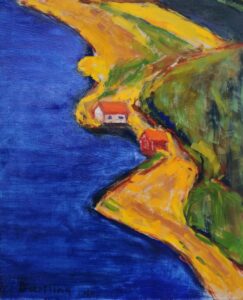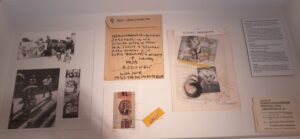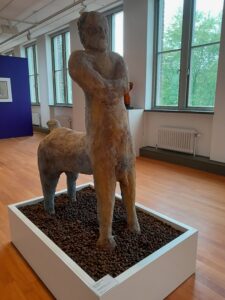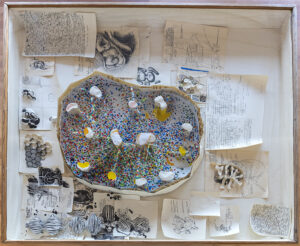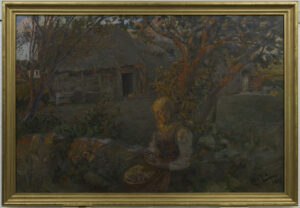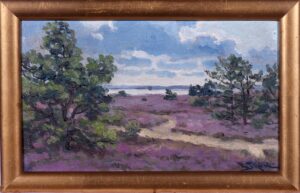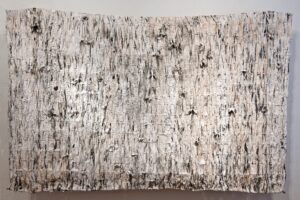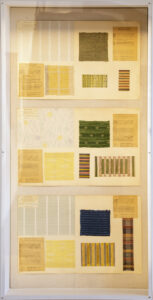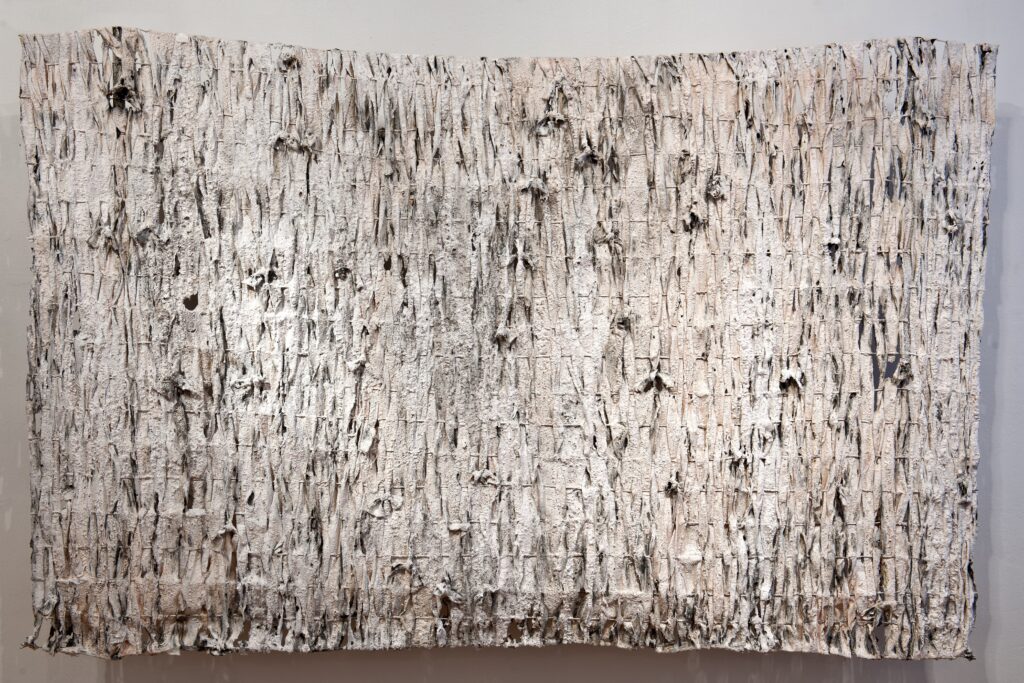Collecting – Terese William Waenerlund and Judith Johansson
Artists work in varied techniques, sometimes ancient and sometimes totally innovative. An example of the latter is Terese William Waenerlund, who´s piece ”Weave” takes up an entire short wall in the room. It is what it´s named – a weave. But not by traditional means, instead of warp the framework consists of reinforcement steel. The material used for the weave are textile rags, which are treated with a ”glass cream”, a mixture of sodium silicate and glass powder. The surface is then burned with a gas burner. Most of the organic material goes up in flames and the process creates bubbles and a rather course structure of the glass. She named the process ”Burn Out”. The colours are light, mostly nuances of white, but some parts are sootily burnt. William Waenerlund’s background is as a glass artist and she wanted to find a technique to create something else than the thin, transparent and smooth. She also wanted to escape the usual view on glass as something functional, such as a drinking glass or a bowl.”Weave” is a piece of art, with no other function. At first glance it looks very textile, almost soft.
But unlike woven rugs it is neither soft nor very durable. The fragility of the glass is present even if the expression is totally different to what we associate with the material glass.
Judith Johansson ran her weaving studio in Knäred for some fifty years and is recognized as one of Sweden´s most noted textile artists. She is widely represented especially in Swedish churches.
Her woven rugs which are on display here are in most aspects, except perhaps aestethically, the total opposite of William Waenerlund. On the low podium, to the right, lays a rolled up rag rug with fluffy elements of rabbit fur. Because of the shortage of other material during the second worldwar pieces of fur from rabbits were used. She could buy those from a local merchant. Other material that could be used were strips of paper blankets or uniform cloth. The light Scandinavian pile rug weave, or rya rug, hanging on the rack also dates from the 1940´s, and is made of residual material. ”Use what you have” was they way to think during times of war.
The rug ”Arild” which hangs on the long wall, close to the door, is woven in the technique rölakan, also typical of Scandinavia, and consideraby more exclusive than the two so called ”war rugs”. It was made in 1955, and has a geometrical pattern with upstanding rectangles in blue hues broken by horisontal lines of squares in pink. Compared to the war rugs, it breathes financial boom, faith in the future and good access to the preferred material. ”The cliffs of Arild has such a peculiar play of colours, it´s like the water on a summer´s night”, Judith herself said about the rug.
